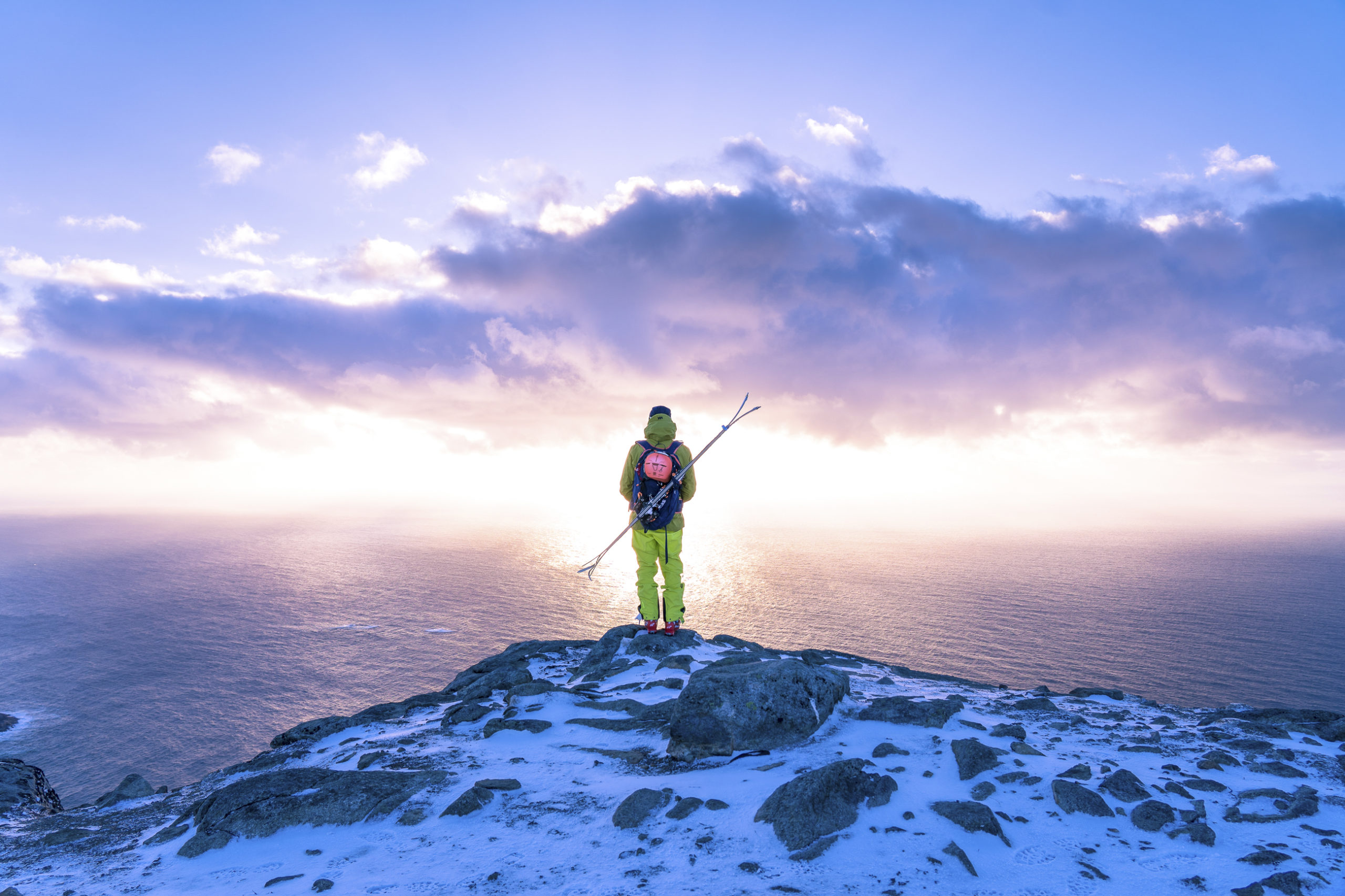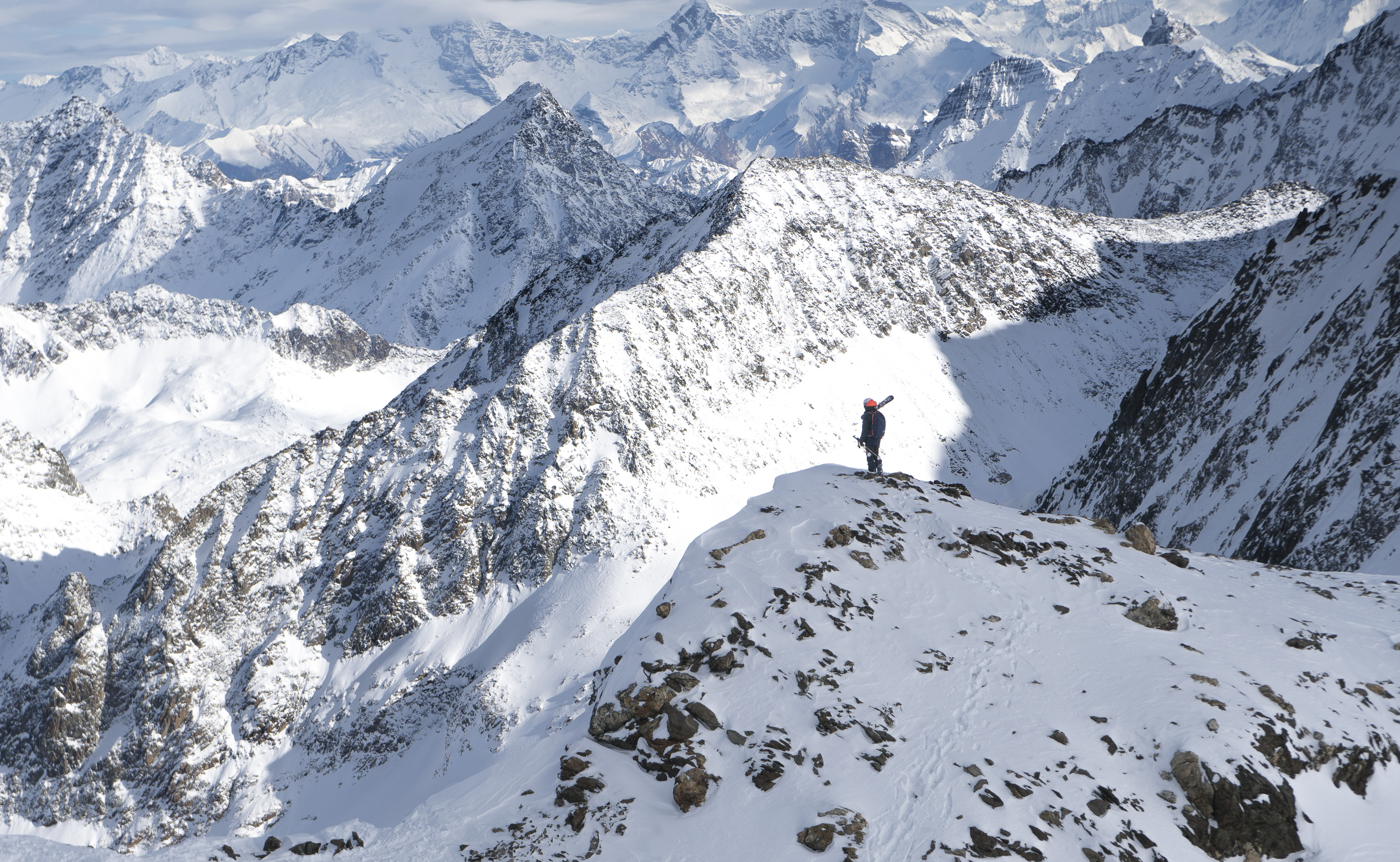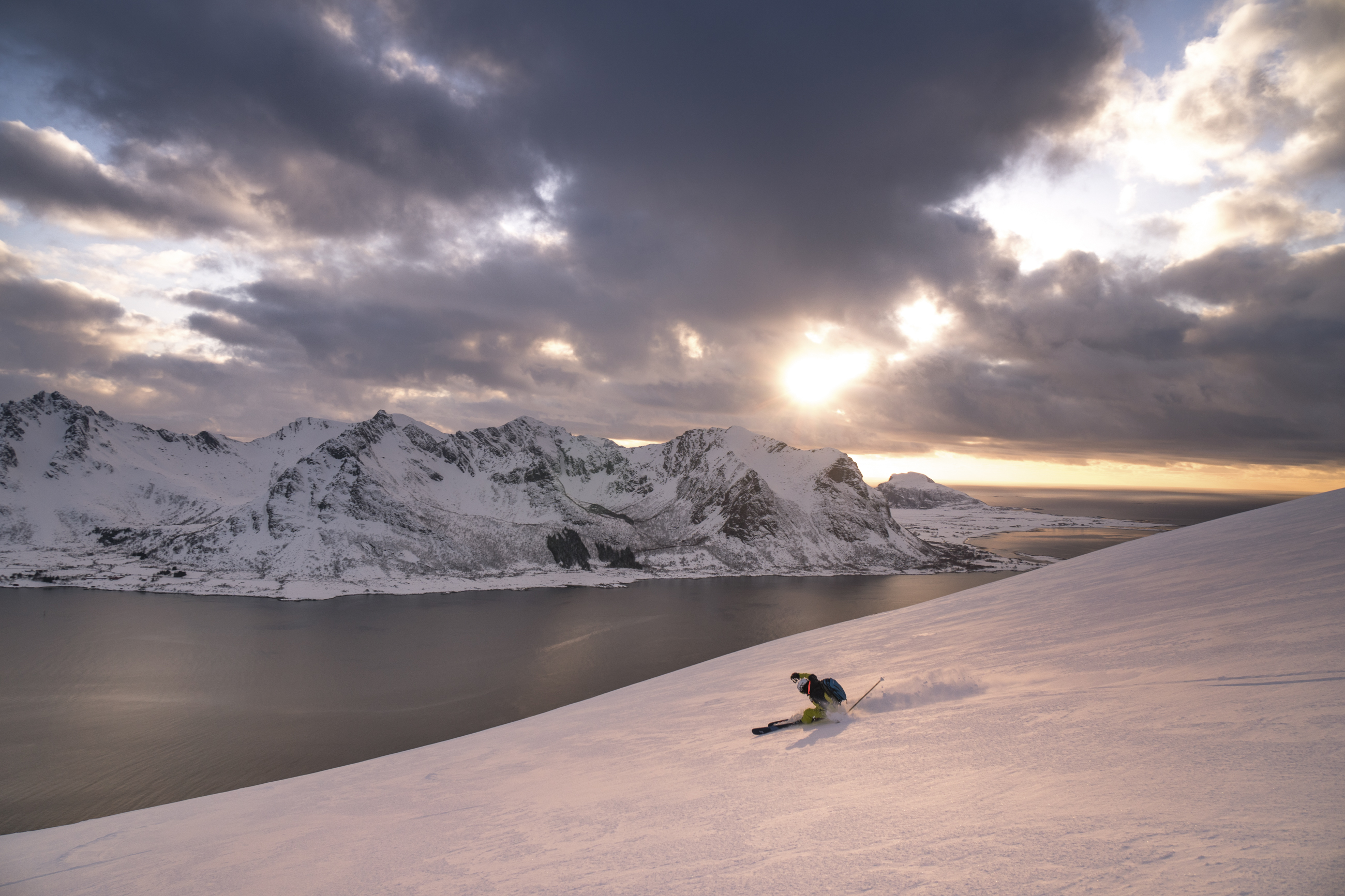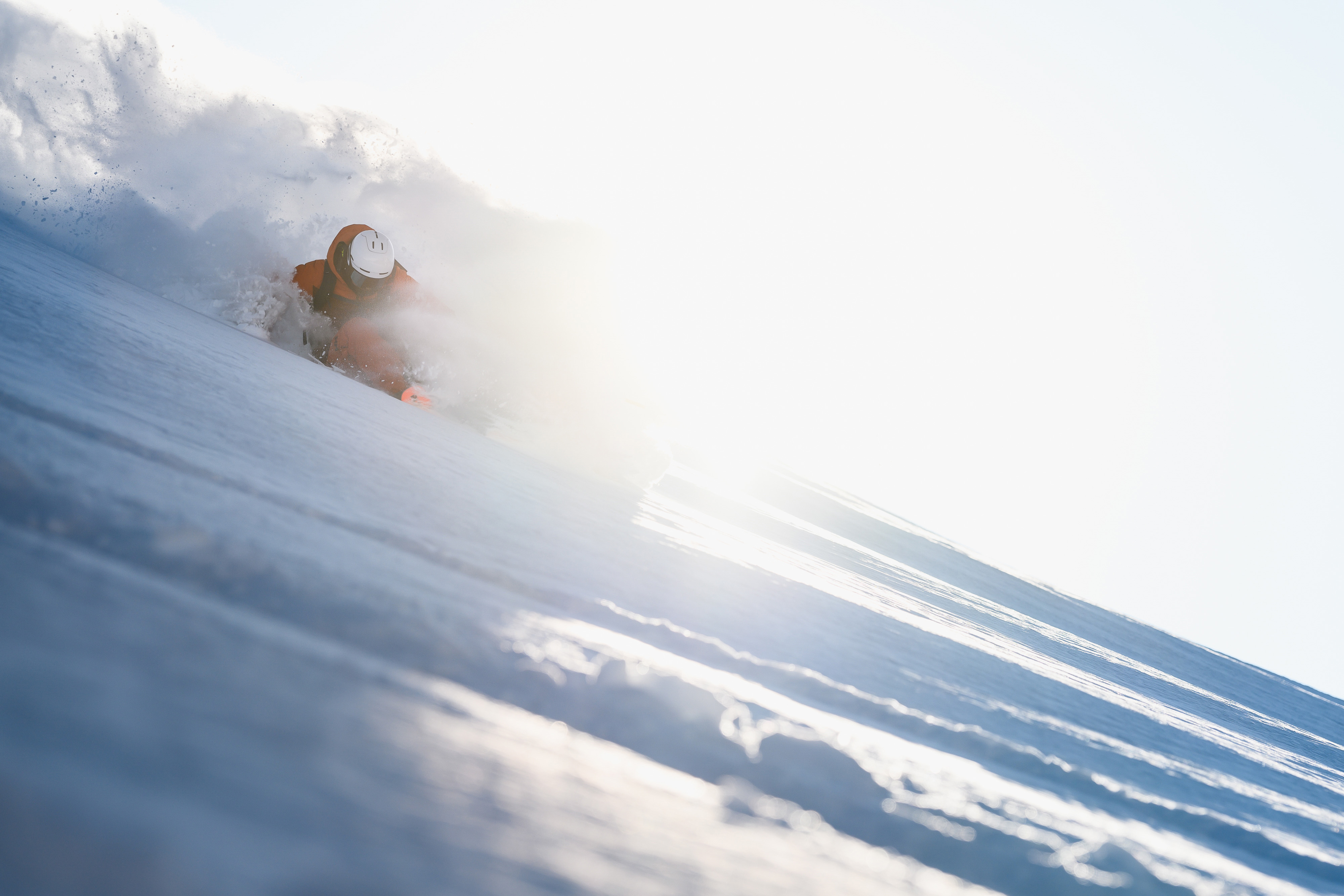Interview by Camilla Pizzini

Interview with Lorenzo Alesi, talking about skiing and sustainability
Photos by Martino Colonna & Alice Linari & Samuele Cavicchi
We interviewed Lorenzo Alesi, professional skier, Helly Hansen, Blizzard and Tecnica ski instructor and coach, but also all-round explorer. He likes to travel and focuses on freeriding and ski mountaineering. His motto is: “Nothing is Unskiable”.

How are you? How’s the quarantine going? Have you found new passions or are you trying to keep as much training as you can?
Like everyone else I am at home and I try to keep a daily wheel to keep fit so I train and read some books, Netflix, some ideas about upcoming trips.
Would you like to tell us what you do to keep fit during this lockdown period?
I have a workout that I do six days a week and every day I try to give myself a routine to stay fit. It’s not easy, even though I have a garden, to stay so many days indoors.
Next destination? Any plans in mind?
All the projects of the spring are blown and now we are thinking about how to redesign the next 4 months with different ideas trying to stay in Italy to make the most of what we have. We have some projects that, if we can, we would like to start in mid-May and continue until mid-December. We are working on them, we are in the final phase, but obviously we have to wait for the authorities to give us some indications for the afterwards. We are ready, but we must wait.
You are originally from the Apennines, but you have travelled all over the world. Are you still so attached to your area now or is there a place abroad that you prefer?
Obviously I’m still very attached to the Apennines, it’s actually not a very well known area. One destination I have in my heart is Norway and Lofoten, which is a great place that I always come back to very willingly.
What comes out of your profile is that, clearly you are very passionate about the mountains, but you have a lot of nice pictures. Are you also passionate about photography? When you ski, do you also like to dedicate yourself to the compositional research of shooting?
It’s a passion that comes from my father who was an amateur photographer. I really like photography, I’ve always been passionate about it since I was little when I saw the slides of their expeditions, because I come from a family of ski instructors, mountain guides and explorers. I also tried to make some prints a few years ago, but I’m still just passionate about it.


How important do you think it is that all the necessary measures are taken to preserve nature also by calculating all those activities that especially someone like you does?
For me it is fundamental, especially in recent years we have tried to develop a whole series of projects following the principle of sustainability. We experience firsthand what the effect of climat-change is, which is devastating. It is impressive to see how much the glaciers have retreated over the years, how the seasons have changed, the phenomena so strong, impetuous and fast. We try to have a sustainable attitude and organize trips with low CO2 emission vehicles, just to share a message related to the possibility to go to the mountains and pollute less, reducing local emissions. As well as with the brands I work with, we are trying to develop concepts related to sustainability, on clothing, on how to recycle the materials needed to build skis, boots or the membranes themselves, on what kind of products to use certain membranes. This is an important issue and it will be more and more so in the future if we want to leave our children a world like the one we have experienced.
Your motto is “Nothing is Unskiable” which led you to go anywhere in the world, how is it that you ended up skiing on volcanic rock?
Let’s say that the challenge was born from a bet of my family because I could see the pictures of the skiers descending from the scree on the mountains or I could always hear the stories of them skiing on the grass when it was wet. Then I read an article “a first one on the Stromboli” and then I had the intuition to try, especially after that intuition that had strongly compromised the area. I called two friends and we decided to come up from the sea and it was really exciting, nice to ski going towards the water inside this bay with the boats moored at dawn. We tried over the years scree, clay, grass, we also had other ideas for the summer, but unfortunately we had to stop because of the lock-down.

Is there a difference between skiing on these materials and snow?
On the sand not so much, as an example on the Stromboli the slope is important and we descended at about 40km/h, so you can’t make many turns. On the screes it’s still different because you ski on the whole mass of rock that moves towards the valley. On the gullies you roll, even if you can make lines on the steepest slope. On grass when it’s wet and there are steep slopes and even calculating certain types of grass, you can ski, it’s not exactly the same thing, but it’s fun. The only thing is that when you land you feel it, it’s not like snow.
Is there actually something you really care about that you would like to pass on to your followers?
What I’m trying to do and transmit is to be sustainable in all the journeys you make, as I was saying before, we have to try to define a different, new model of exploration because otherwise we risk ruining nature and the environment in an irreparable way and we risk leaving nothing to those who come. So the fact of choosing different destinations or means of travel than usual, to slow down a little bit, go a little slower while respecting the environment. Also have a behavior of respect for the cultures and traditions of the places you visit.
In your opinion what will be the consequences that sports such as skiing will suffer due to climate change?
In the coming years we will see a shift in people’s interest towards ski alp and freeride because first of all there is a different relationship with nature and also because it is more sustainable. Undoubtedly there is also an idea of cross-country skiing on which you have to work, that is to go to the mountains in all conditions, not wait for the perfect day with the right snow, you have to be good at enjoying the mountain for what it is, adapt to these variables. I believe that the great challenge of the whole ski tourism market is just that, without wanting to criminalize what is connected to ski slopes. Moreover, as far as all the realities connected to downhill skiing are concerned, it is clear that there will be an optimization of energy resources, a reduction in costs and a better yield of everything that is the system.

“What I’m trying to do and transmit is to be sustainable in all the journeys you make, as I was saying before, we have to try to define a different, new model of exploration because otherwise we risk ruining nature and the environment in an irreparable way and we risk leaving nothing to those who come.”
Which innovation would you appreciate most in the winter field?
I believe that the three fundamental points should be first and foremost a reduction in the use of chemical substances in waterproofing membranes. The second is a reduction in the use of solvents and the third is a reduction in the use of water in the dyeing passages of the membranes. I think this is important because we must try to preserve mountain environments from these substances. In fact, GreenPeace research has shown that these substances are found in large quantities all over the world. This is an alarm that we must listen to. The fact that some companies, like Helly Hansen, are moving in this direction is good, but we need to do even more.
You were one of the first poeple out there to put ski touring bindings on freeride skis, why?
Let’s say that the technological innovation in recent years has allowed more and more high performance and lightness in the materials that are two important characteristics for those who live the mountain in a professional way. I started to use them years ago and I appreciate more and more their development and performance that thanks to brands like Blizzard and Tecnica improve.
What would you recommend to someone who wants to become an all-round skier like you?
The first thing is to follow a professional path, either a ski instructor or a mountain guide, and then to start moving around in the environment, but always perhaps being followed by experienced people. Also to develop a competence that passes through knowledge, study, but also through experience that must be gained over time. Finally, one thing that I always recommend is to “go back” especially if you do not have the certainties, the right conditions or even safety on a slope, always better to go home, because the mountain always remains, instead risking the skin is useless.
How important are the materials in the expeditions? In particular boots?
Boots are almost more important to me than skis. Obviously technology has helped a lot in recent years, companies have been able to create boots that are very light, yet provide excellent downhill performance. The boot is fundamental for the following points: lightness, but at the same time the lateral hold, the width of movement in the skin or walking, all features that today’s brands are fortunately able to give. The same applies to skis, which must be light, but also offer remarkable performance when skiing. Both are undoubtedly important, and above all we must try to create a perfect combination between the two. Surely a good way to start is to spend a lot of time looking for materials.
What will be the first thing you will do as soon as you finish this lock-down?
I’m going to put a pair of skis on my feet and go and have a good skinning with my dog. For us who live in the mountains almost every day of the year to be in this situation is a bit like being in a cage. The first thing I’m going to do is definitely this.


Share this Feature